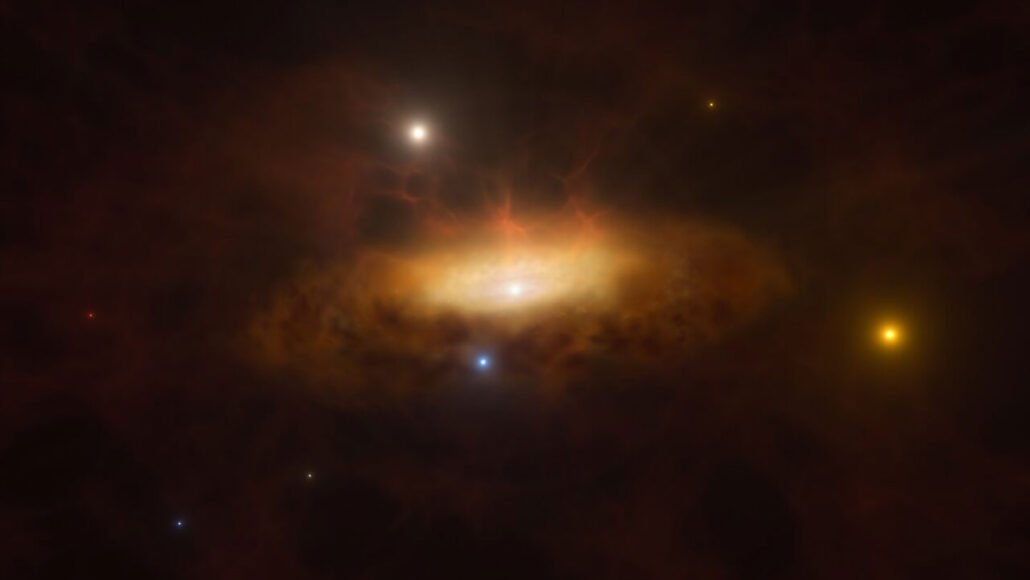Astronomers caught a supermassive black hole turning on for the first time
The discovery should help researchers better understand the active cores of galaxies

A supermassive black hole in galaxy SDSS1335+0728 has lit up. This could give astronomers a new look at how such celestial beasts awaken.
M. Kornmesser/ESO
By Adam Mann
Somewhere in the not-too-distant universe, a cosmic beast is waking up.
The monstrous object is a supermassive black hole. Some 300 million light-years from Earth, it sits at the center of a galaxy called SDSS1335+0728. Over the past four years, astronomers have watched it go from dim and quiet to bright and active. It’s the first time such a transition has been observed as it happens.
Researchers shared the discovery June 18 in Astronomy and Astrophysics.
The finding could offer insight into what powers active nuclei of galaxies, which are enormous collections of stars. These active galactic nuclei — or AGN — develop when supermassive black holes gobble up huge amounts of matter. Afterward, they become bright enough to be seen across the cosmos.
Rise and shine
Every two days, the Zwicky Transient Facility (ZTF) scans the entire Northern sky. It uses a camera with an extremely wide field of view. Housed at Palomar Observatory in California, it’s run by a public-private partnership. And scientists using the camera there saw the galaxy SDSS1335+0728 suddenly and dramatically brighten in December 2019.
Specifically, the galaxy was getting brighter in wavelengths of light that are visible to the human eye.
“At the beginning we thought, ‘Okay, this is a normal AGN candidate,’” says Paula Sánchez Sáez. She’s an astrophysicist at the European Southern Observatory. It’s in Garching, Germany. But then Sánchez Sáez and her colleagues looked at data for this galaxy going back 20 years. They saw no previous signs of activity.
Black holes can light up when they rip apart and consume stars. As material from this stellar feast spins around the black hole, it heats up. This causes the shredded matter to produce bright light.
Such events are fairly short lived. They tend to last a few days or months at most. Yet Sánchez Sáez and her colleagues watched SDSS1335+0728 stay bright for the next few years.
This hinted that its black hole was going through a more dramatic change.
Talk about a glow up
Then, in February, a NASA telescope in low-Earth orbit — the Neil Gehrels Swift Observatory — watched as SDSS1335+0728 started glowing in X-rays. Other facilities caught the galaxy giving off even more wavelengths of light.
“All the data we have in hand seems to tell us that we are observing the formation of an AGN for the first time,” Sánchez Sáez says.
It’s possible that the black hole in SDSS1335+0728 is eating a smaller galaxy that fell into it. But at this point it’s still unclear exactly what’s going on. Observations by NASA’s James Webb Space Telescope could reveal more. So could data collected by future facilities, such as the Extremely Large Telescope now being built in Chile.
With more data, scientists can watch how gas is moving around this black hole. And that, in turn, may help explain why it has turned on.
“We hope that from this source we will be able to learn how AGNs become AGNs,” Sánchez Sáez says — “and how supermassive black holes grow.”







